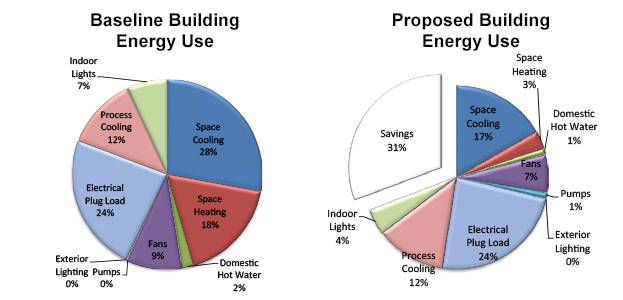 Energy modeling has been around for a long time but recently has gained popularity with the growth of LEED® and the desire of many building owners to lower costs.
Energy modeling has been around for a long time but recently has gained popularity with the growth of LEED® and the desire of many building owners to lower costs.
Energy modeling is a computer simulation of a building, employed to predict energy use, demand and cost. These models include thousands of inputs defining the building envelope, MEP systems and controls, as well as predictions about how and when occupants will use the building, and typical weather data for the specific geographic location. Because of the nature of assumptions made in the software code and the user inputs, the models should not be expected to exactly predict utility bills; however, the results are accurate enough to make informed decisions about design options. Models of existing buildings can, to some extent, be calibrated to utility bills. In addition, renewable energy generation modeling can be integrated to predict net energy use.
While modeling often is used to document energy saving for LEED certification, its real value is in the early design phases. Code-minimum construction rarely yields the lowest life-cycle cost. Energy modeling typically reduces energy costs by allowing the user to make better decisions about system types or control set points. Modeling often pays for itself immediately by avoiding poor energy efficiency investment choices. It is fairly common to get a result that was not intuitive or immediately obvious, which can be another benefit of energy modeling. Not only can it help lower energy use, but it can save construction cost by avoiding bad investment choices through informed decision making.
There are numerous applications for energy modeling. It can be used in the planning phase for building orientation studies, sensitivity analysis, comparisons between alternate HVAC systems, and life-cycle cost analysis. In the design phase, it can be used for geothermal heat-exchanger sizing, to refine control set points, or to prove energy code compliance. Once the design is complete, it may be used to document energy savings for tax credits or LEED certification.
Competent energy modelers understand the complex interactions of building systems and the impact these interactions can have on building performance. Hanson’s engineers have extensive experience in energy modeling for all phases of projects. For more information, please contact Matt Slager at mslager@hanson-inc.com or Bob Knoedler at rknoedler@hanson-inc.com.